5245L report:
As some might remember, this is the start of my trip:
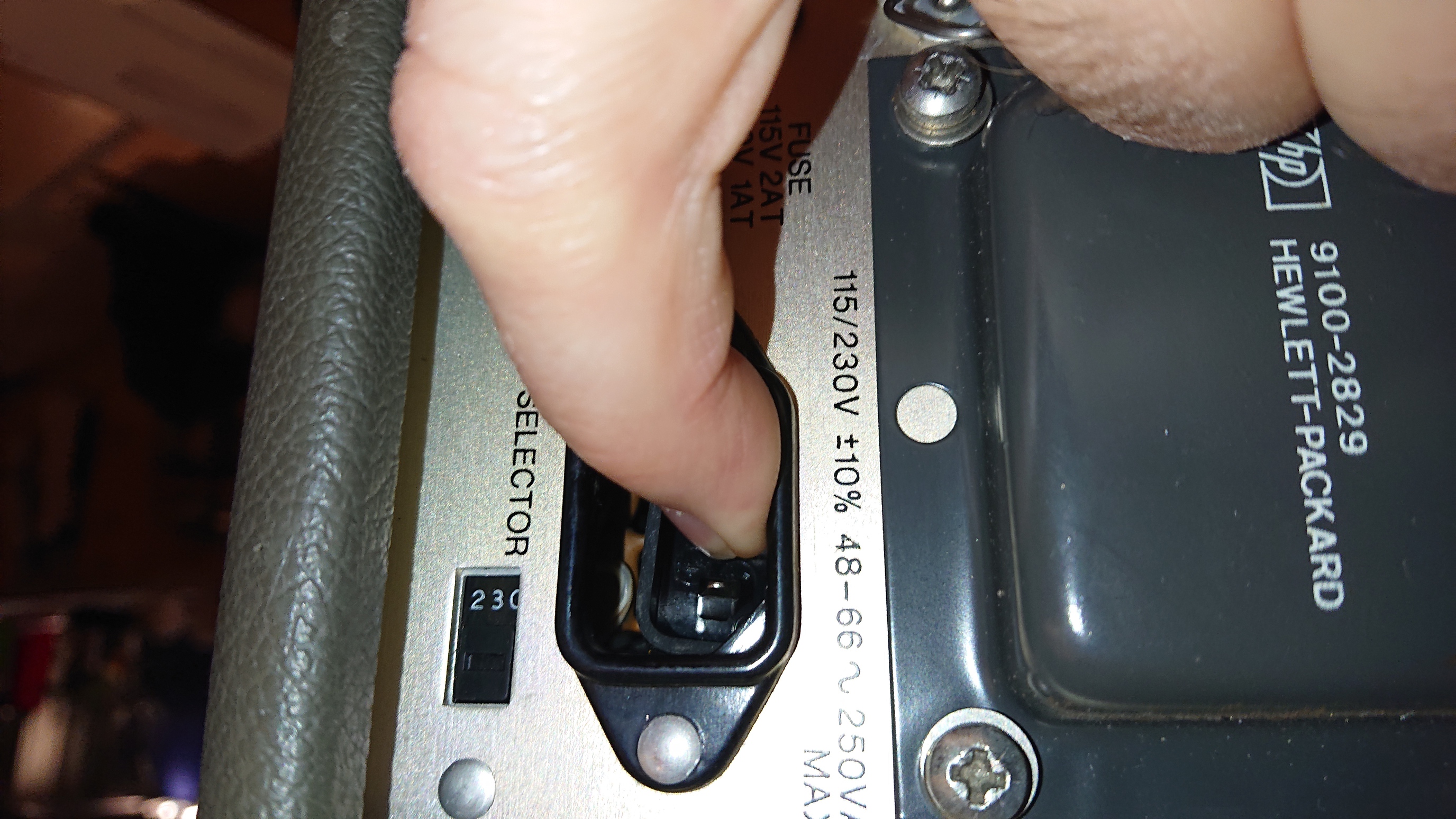
I ordered a bag of IEC inlets and waited. And waited. And waited. Finally messaged seller who realised they'd been paid and not shipped, so they improved radically.
Old one had to come out. Cerebus guessed right; it was Bakelite or similarly brittle; so would crack with gentle applications of side cutters. Finally, the rivets were easy to cut and remove.

Crumbs indeed;
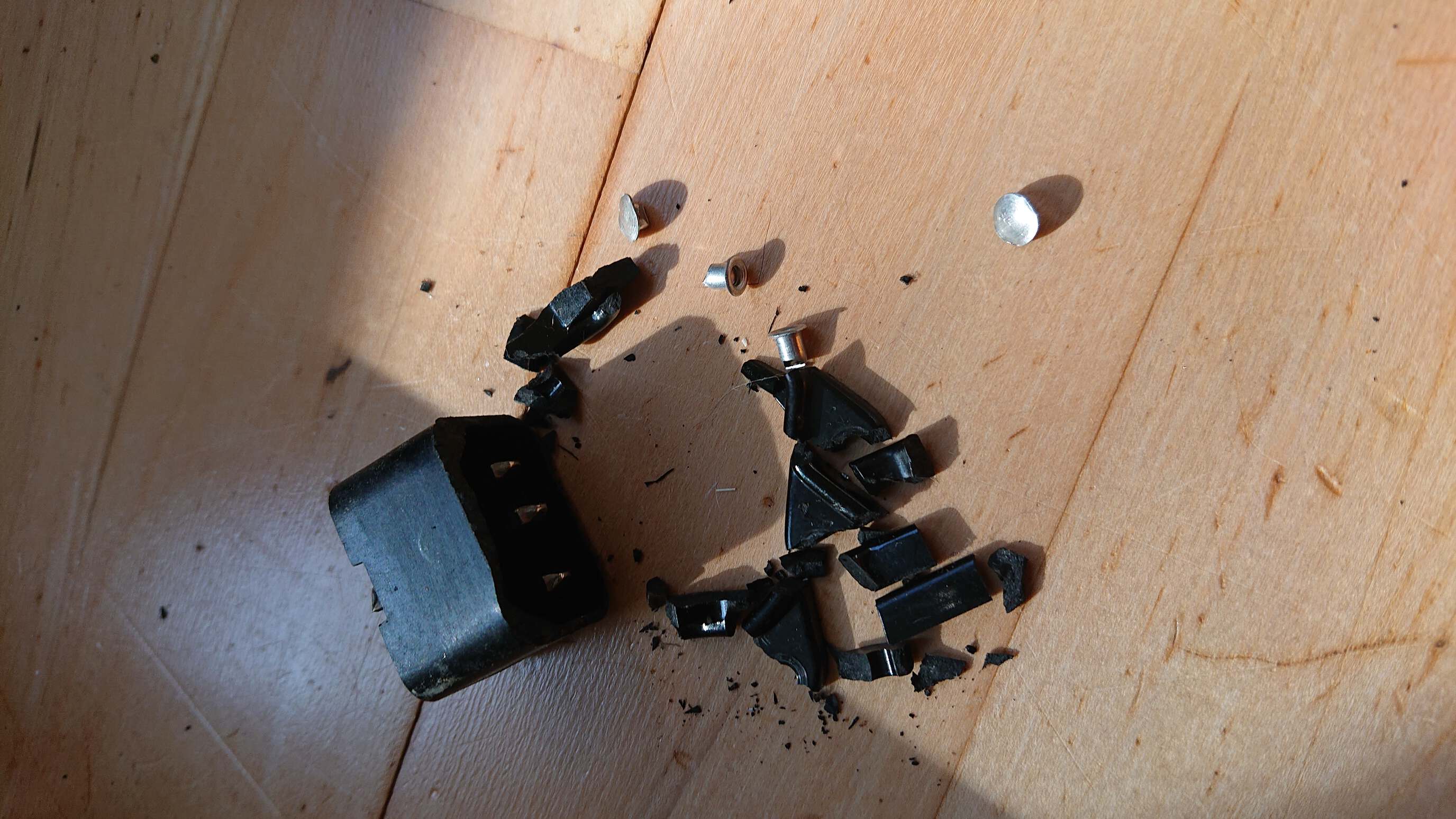
So, how to fit new one? My rivet collection was lacking, and I wanted something reversible, Screw and (possibly rivet-)nut woulda been best, sheet metal screw borderline gorilla. Loose nut on inside near impossible to fit. Compromise turned out to be M4 tap:
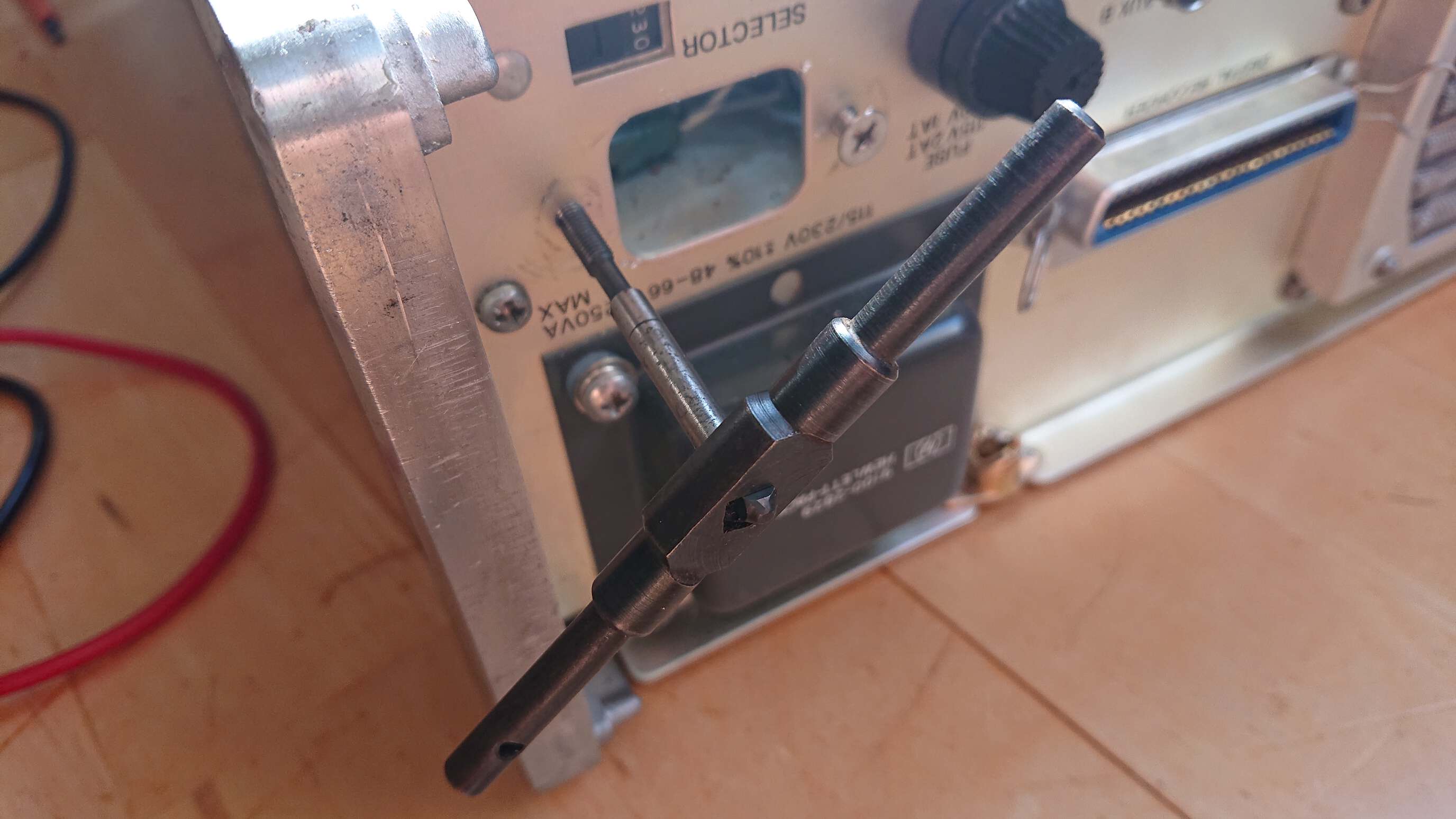
This is minimal impact on the chassis, reversible, and functional. I'm happy:
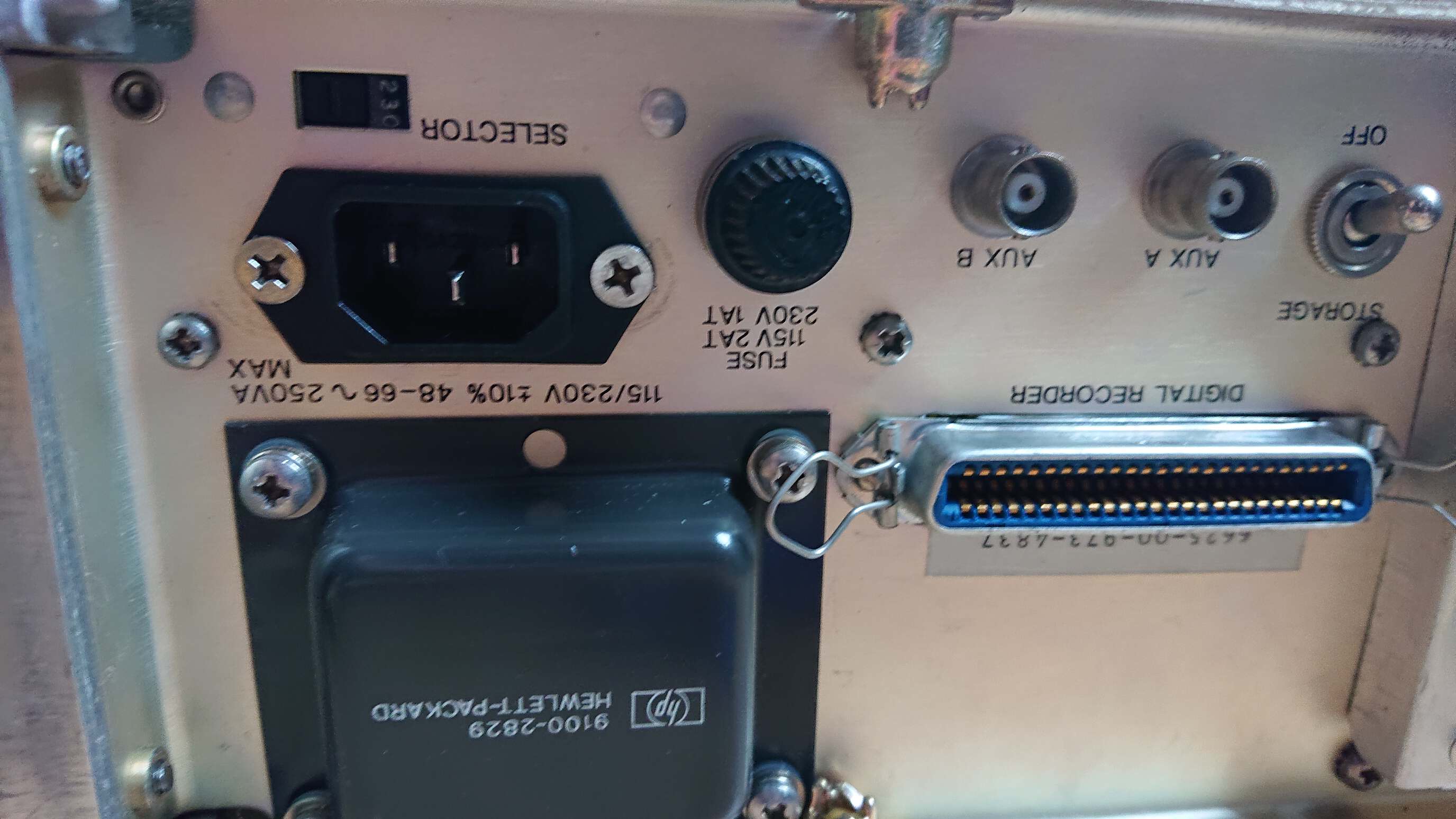
The old anti-HF caps were brittle and large. I had 2 10nF X2 caps in storage, so swapped them out.
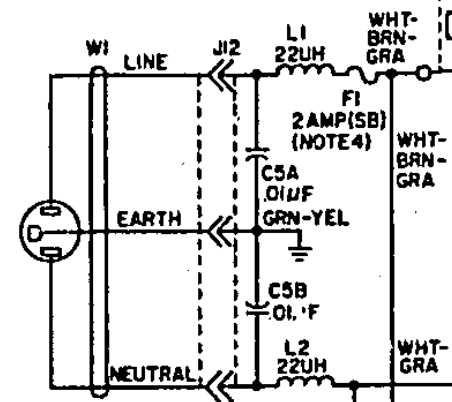
Soldered inductor leads, ground strap and capacitor legs to undressed Fastons and then fitted them to the connector.
There's not much place left:
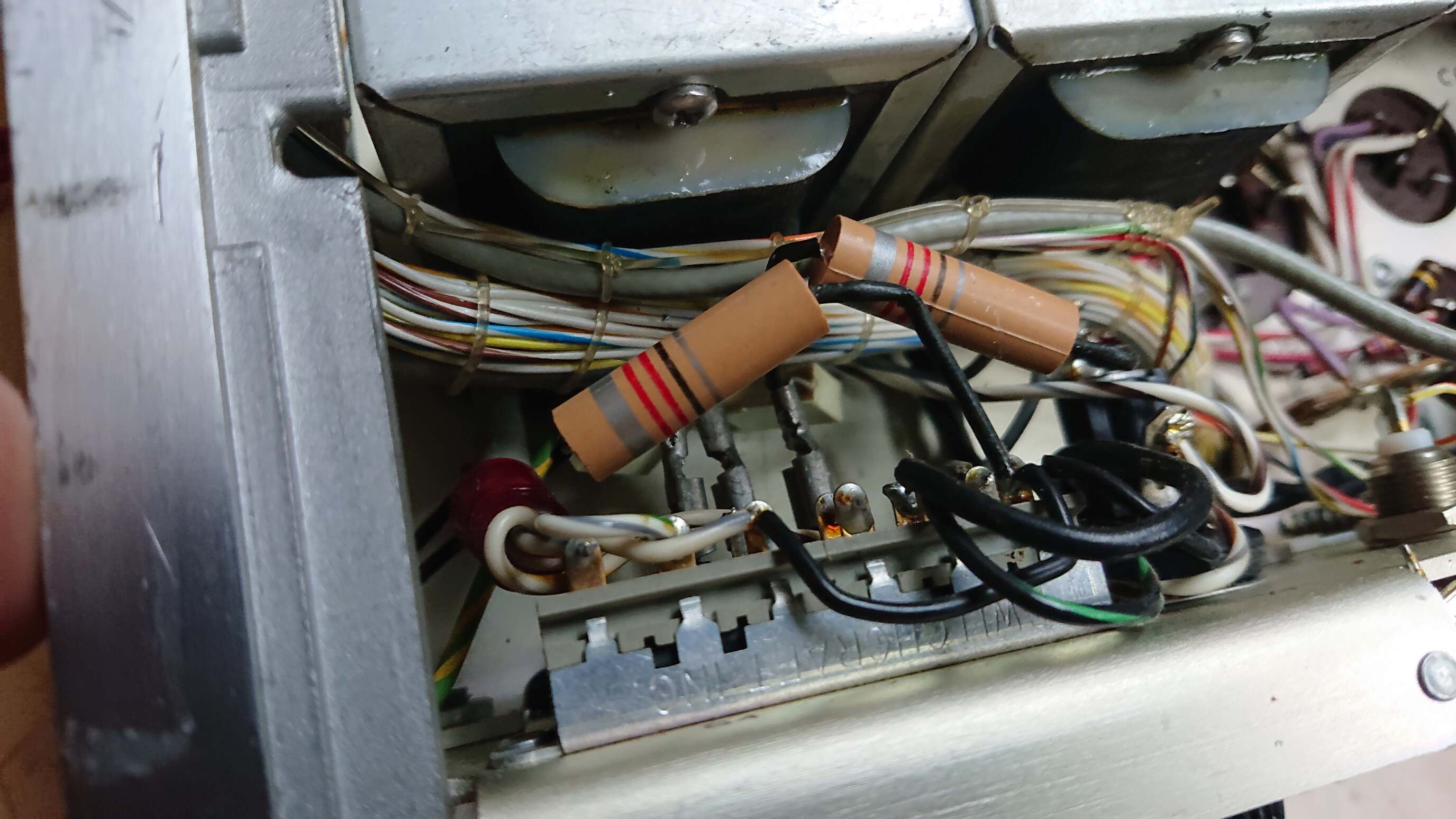
Then on to testing, with the usual "match the manual to the instrument" rabbit hole, as noted earlier tonight:
Proceeded to verification; found several voltages to be off, the -6,9 and 17,6V. But! I must have gotten the wrong edition paper manual. Several resistors on the A7 board (DC regulator) have clearly different, much higher values than the schematic thinks they should have. Counter is most likely newer than manual.
Scanned manual I have is similar. 
Finally found the one on the Keysight site, which is new enough. I have most likely not blown anything;  the voltages are within specification.
the voltages are within specification.
Will do a brief function check, put the covers back on, and come back with a post detailing my actual repair.
Function check:
I had some issues with getting it to trigger; it is a bit deaf. The manual talks about adjusting input gain and it being necessary if you've poked those gorilla thumbs in the DC supplies. I actually replaced a 1k5Ω resistor in the A7 assembly because I lost the original one as I had it desoldered to check it (it was perfectly fine, and the
1 5 2 bands screamed so at me; who failed to listen); now probably a few of the adjustments need redoing.
That was not a very brilliant rabbit hole to descend in.

Anyway, you only get a counter to do this precise counting off of a FeelTech if you lock it to the FG second output. Neat trick. My 1MHz might not be the same as your 1MHz, but it's mine, and same everywhere here!
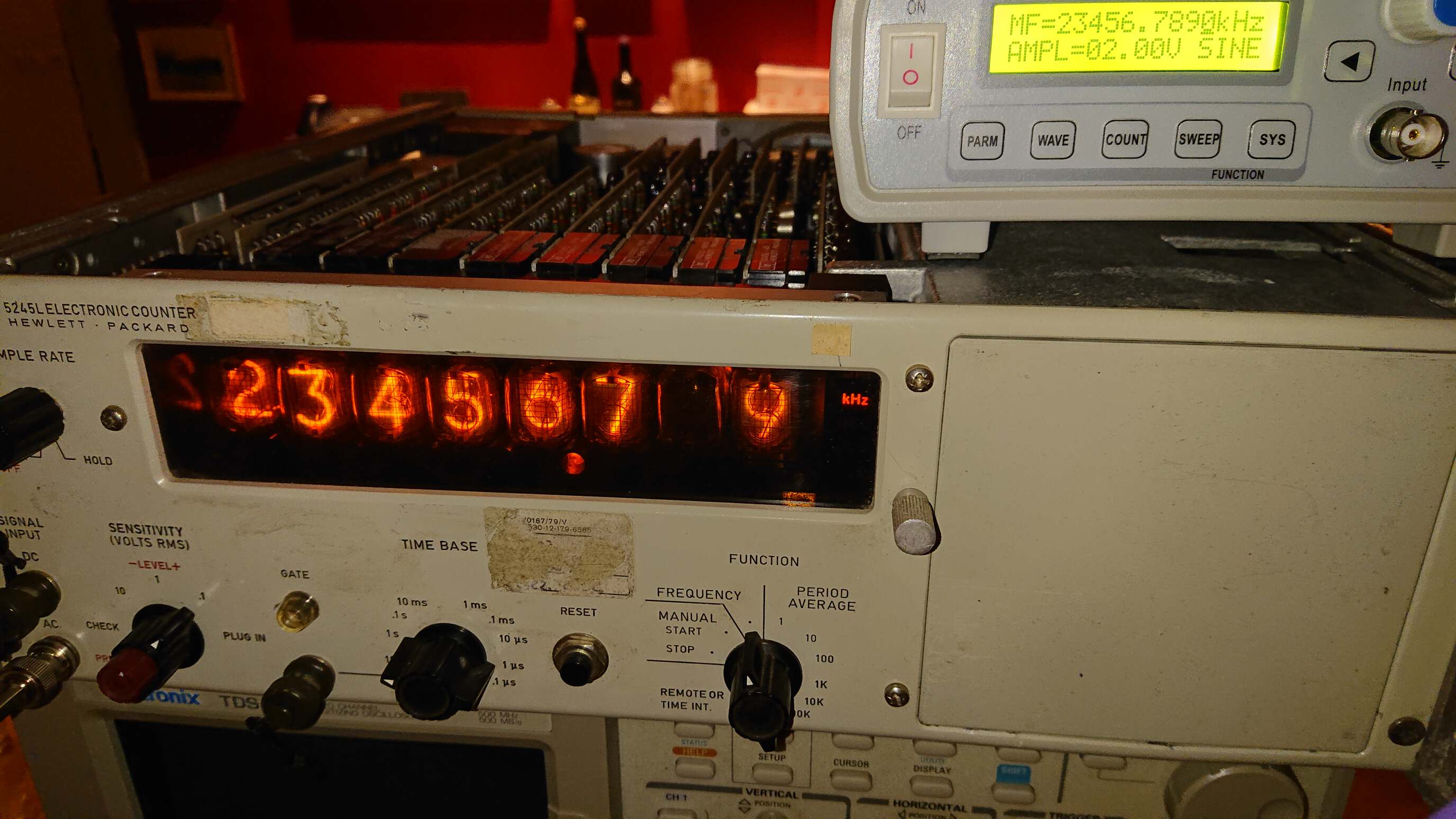
There's one flaky Nixie, but it works sometimes: (at 10s timing mode, so overflowed)
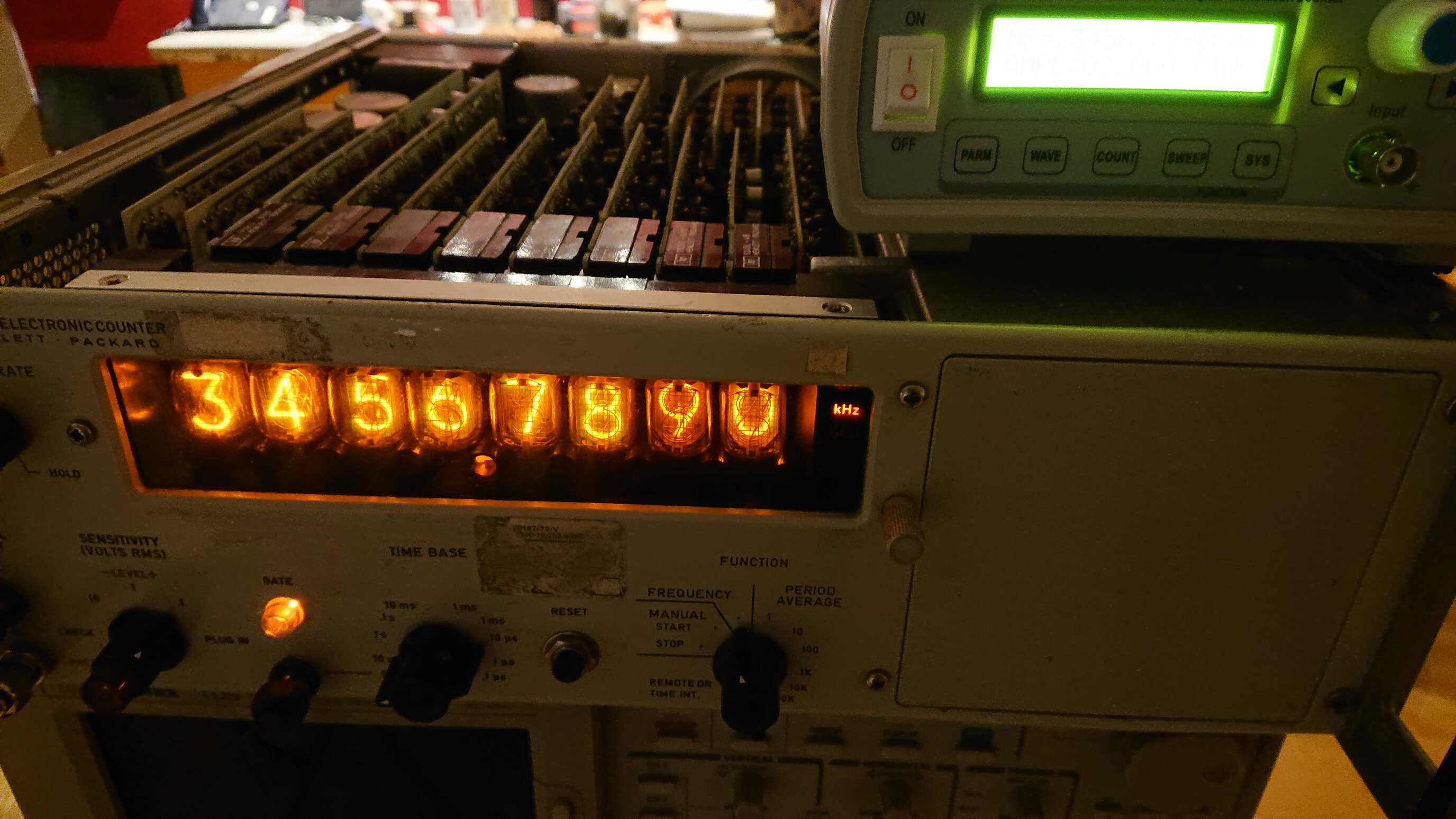
Happy. Next step is to adjust input gain. Are the card edge connectors unobtainium? A lot of work is impossible unless cards are on extenders...